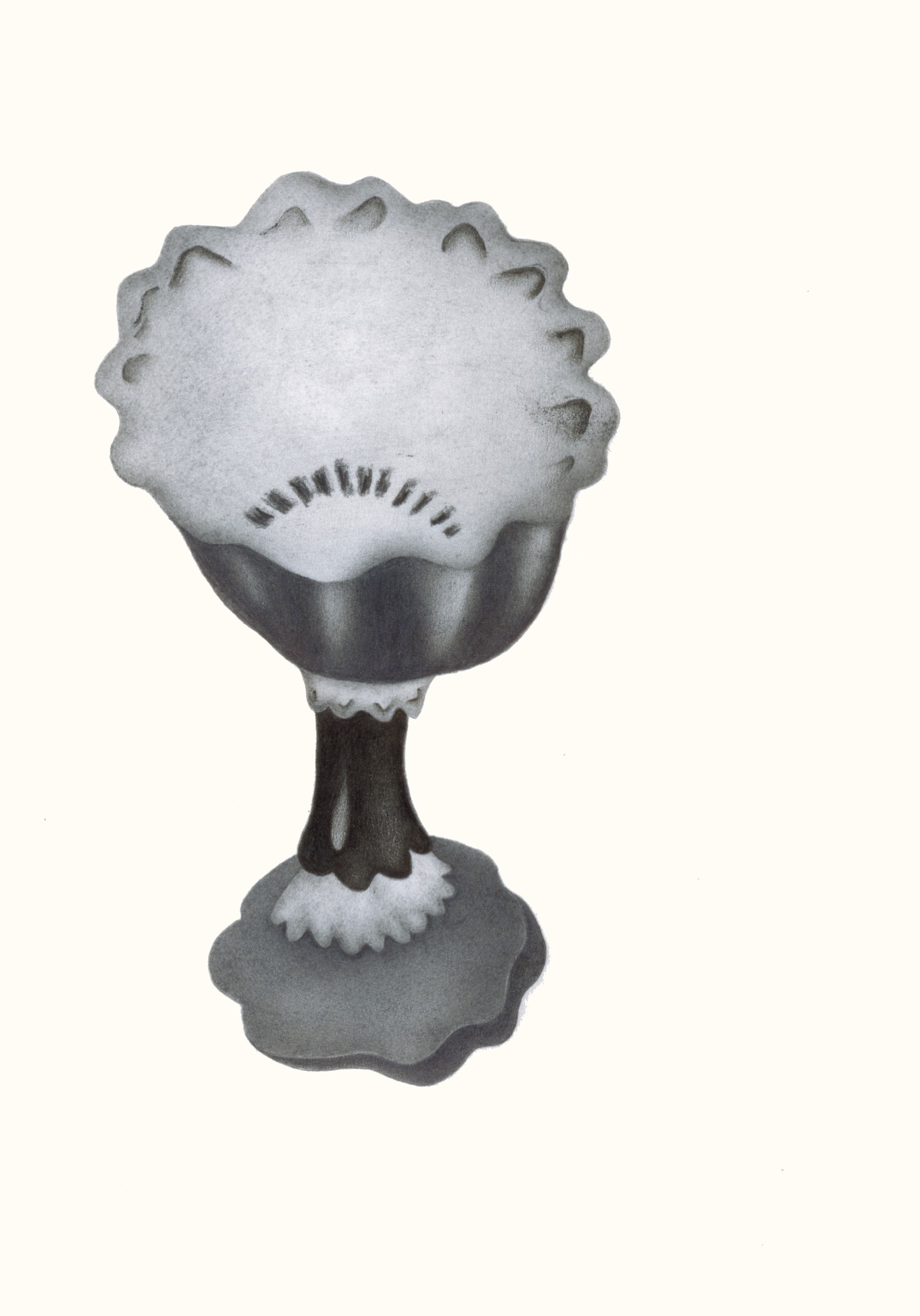GHOSTLY LINES MARCUS STEINWEG, 2017

Marcus Steinweg
“... with eyes even for the twilight.”
Peter Handke
Hanna’s drawings follow a line into the unknown. This unknown, however, is not a distant world but the uncanny in our world. As Sigmund Freud and Stanley Cavell, and in his way Martin Heidegger, too, have shown, the uncanny does not indicate another world. It concerns the ordinary and the everyday. As an index of ontological inconsistency, it evokes the untrustworthiness of the zone of trust that we call reality. Hanna’s work is open to the uncanny in the ordinary, which imparts it with something disturbing. However, the artist abstains from direct articulation. One thinks of Gilles Deleuze’s comments on Knacks by Francis Scott Key Fitzgerald. There is something imperceptibly broken. Reality proves to be flawed. It lacks substantive consistency. The objects drawn by Hanna are signs of this lack of consistency.
They are symptoms of an uncanny world. They are often – in an unsettling, attractive yet disturbing way – sexually charged. With simple means, the artist succeeds in creating irritation in the recurrence of the most commonplace. In doing so, she avoids the theatrical, which would increase the irritation. The line into the unknown proves to be a line into the only world without a metaphysical world behind. Instead of pointing to transcendence,
it emphasises the inconsistent character of the web of immanence. Its fragility flashes. Ghosts live in the gaps. There is no doubt that a spectral zone opens up upon entering Hanna’s world of objects.
Everything depends on understanding it as the world of all of us. Even the world of things turns out to be ghostly. Its elements oscillate between presence and absence. One could also
say that it o-pens up a sphere between light and darkness, evidence and non-evidence, the uncanny realm of a reality without consistency. The line into the unknown is an almost invisible stroke. One follows it with closed eyes. Without the willingness to sacrifice evidence it is entirely invisible. The threatening and the uncanny lie in the challenge to the viewer to free himself from his certainties. Not to dream, but to experience reality as
dream texture. It is about an experience that brings the subject out of step. Hanna’s work insists on the necessity of losing oneself in the undefined. The awareness that she has in store for us is that the undefined belongs to normality. They coexist.
Objects become agents while the subjective character of the subject begins to crumble. And with it, the world disintegrates. This disintegration is not arbitrarily induced or the expression
of a pessimistic ontology. It is constituent to a primordial, inconsistent reality. To acknowledge this inconsistency means to accept the unreal parts of reality. As everyone knows, they are in the Lacanian sense of the word real and as such efficient in a ghostly sense. It does not work without ghosts. They exist. Hanna’s work documents their shimmering presence.
Marcus Steinweg, 2017
(Translation: Heather Allen)
